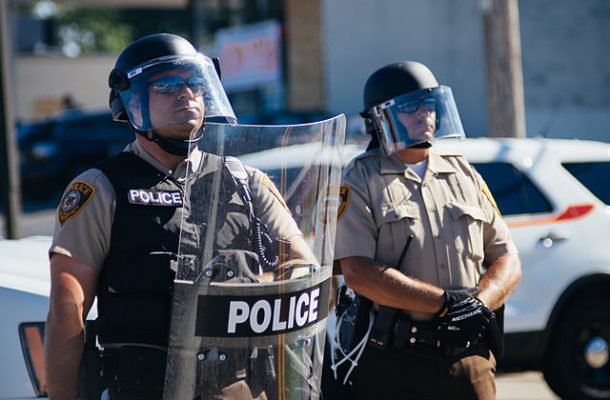Australia’s police are not being militarised

Having read the article last month by Antony Funnell for ‘Future Tense’ and published on ABC News Online, I felt there was a need to respond. The article specifically targets the equipment being used by Australian police agencies and states that ‘creeping militarisation of our police has experts worried’.
This isn’t a new discussion in the public domain, and it often erupts after a large event, mass demonstration or international gathering where the police have been involved in large numbers.
The surprising thing about the article is that there’s no identifiable recent event driving the story. In fact, it appears to be about the militarisation of the police in the US, not Australia.
Most of the images are from US police sources and the article cites famous events such as the Ferguson riots in Missouri and the military weaponry being rolled out to police agencies across the US through a special program.
But it does take a look at the equipment and training the police in Australia are receiving. Senior police officials have identified officers’ needs, and the elected governments of their jurisdictions have approved the acquisitions and training.
The Western Australian Police Force received the AR-15 semi-automatic rifle after going through a rigorous evaluation process, and the same can be said for others, such as Victoria Police. In both cases, an increased level of firepower was judged necessary to meet the ever-increasing organised crime and terrorism threat.
The article suggests that the police agencies are putting special forces onto the streets of Australia, when nothing could be further from the truth. The photos shown in the article are, as mentioned, from US police agencies and one case in Canada.
The Australian photos are from the Lindt Café siege, where no one could or should question the use of tactical police, along with a photo of riot police wearing protective equipment similar to what’s been worn for the past four decades around the world.
If the concern is the rollout of carbine rifles (and it appears that may be a part of the story), it’s important to remember that the carbine is known for its accuracy and, as the police commissioners stated when requesting the equipment, give the police service the firepower it needs for an appropriate response to serious gun crime.
The article questions the issuing of such weapons because the police are seldom attacked with them. The reality is that these weapons give the police an advantage against shooters. Whoever suggested it had to be a ‘fair fight’? If police are facing risk or under threat, they should have access to such weaponry to reduce the risk or stop the threat.
It’s odd to think that this could be a problem. We had those same carbine rifles in Ottawa, Canada, while I was police chief, and the public never raised it as an issue. It wasn’t as if you’d see police walking around on foot patrol with rifles slung over their shoulders; the weapons were available when needed.
I’m not suggesting that we haven’t seen a shift towards policing that appears more militarised. After all, police now wear bulletproof vests outside their uniforms; when I started with the Royal Canadian Mounted Police in 1982 we wore no vests at all. They have more equipment on their belts: capsicum spray, batons and in some cases electroshock weapons, for example.
In most cases, the gear was acquired as a result of following best practices or acting on the recommendations of inquests or inquiries. Police have access to helmets and riot gear for riots, not for the fun of wearing them.
In Ottawa, we had hundreds of demonstrations each year and seldom saw the need to go to hard hats. In fact, in my 32 years as an officer, in three provinces and three territories, for three different police services, I’ve seen these helmets used only for serious incidents.
It’s true, as the article notes, that some military tactics are being taught to the police, such as active shooter response training, to overcome what’s been seen as a shortcoming in responding to many incidents around the world.
The issue was raised publicly after the Lindt Café event in Sydney. To be clear: it is access to carbines that was recommended, not that police should carry them when on patrol. That’s never going to happen.
The purchase of this equipment will be essential to maintain and defend the safety of the public, and it’s the duty of every police officer and the agencies that hire them to ensure they can do their job safely. If the writer wants to attack the police budget, the police agency for its spending or even the police commissioner, have at it.
The scrutiny is welcome, I’m sure. But it shouldn’t be directed at things that are essential police tools. Criticism on this front isn’t fair to the men and women out there running towards danger while we run away, willing to put their lives on the line for mine and yours.
This article was published by The Strategist.
Vernon White is a Canadian senator, and former chief of the Ottawa Police Service. He has a Masters in Conflict Studies from Royal Roads University and a Degree in Sociology and Psychology from Acadia University.














